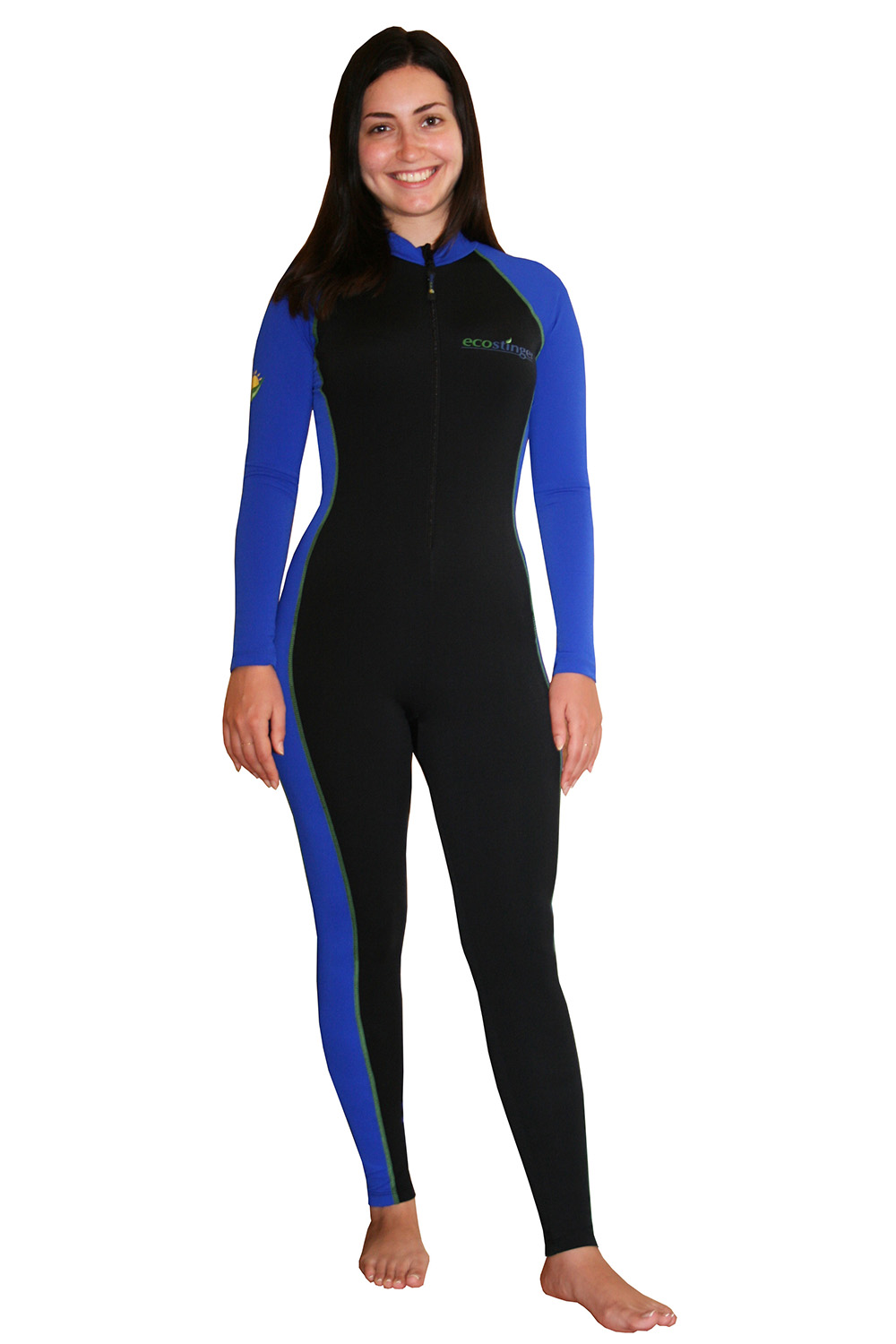Several Respected Skin Cancer Prevention Foundations Recommend The Use Of UV Protective Swimwear
Posted by ecostinger on 28th Feb 2016
Skin cancer is the most common type of cancer in the United States. (http://www.cdc.gov/cancer/skin/index.htm) Alarmingly, the rate of melanoma, the most deadly form of skin cancer, has tripled since the 1970s. The death rate from melanoma has increased from 2.6 deaths per 100,000 people in 1975 to 4.6 deaths per 100,000 in 2011. Though anyone can get skin cancer, those with fair skin are at an increased risk, and the risk is highest for white men. Sadly, even the young are not spared, as skin cancers are also on the rise for teenagers. (http://www.ewg.org/2015sunscreen/report/skin-cancer-on-the-rise/).

Aside from having fair skin, other risk factors for skin cancer include having a family history of the disease, living in a sunny climate, getting excessive sun exposure, using tanning beds, and having been sunburned. ( http://www.mayoclinic.org/diseases-conditions/ski... ) As is evident from the list, many of the risk factors are related to sun exposure. Society is now much more mobile than it was in the past. The increase in budget-friendly flights to sunny destinations has also increased the number of people exposed to the sun. Many people now participate in outdoor recreation, instead of doing indoor sports. Both of these are believed to be contributing factors in the increase of skin cancer. (http://www.foxnews.com/health/2014/06/20/why-skin-cancer-rates-continue-to-increase.html)
To decrease the risk of skin cancer, an individual needs to protect him or herself from the sun's rays, which contain dangerous ultraviolet (UV) waves. Depending on geographic location and weather conditions, it can take just ten to fifteen minutes for sun damage to occur. To prevent this, experts advise seeking shade in the afternoon, wearing hats and clothing with adequate coverage, and using sunscreen on exposed skin to block UV absorption.
Though wearing sunscreen is often number one thing that comes to mind when people think of sun protection methods, it does have some disadvantages. Since it typically comes in small quantities and has to be reapplied regularly, it can be costly, especially for families and those who are outdoors often. Most people apply less than the recommended amount of sunscreen, and it is easy to miss important areas, such as the neck, chest, and back. Some sunscreens can have potentially dangerous ingredients in them, and it's possible that many sunscreens may not block all UVA waves, the most dangerous kind. (http://www.solartex.com/faq/#sunscreen)
The introduction of UV protective swimwear has made it possible to enjoy the outdoors and the beach with fewer worries about sun damage. Though Australia is considered the birthplace of sun-protective garments, they were approved by the FDA in the U.S. in 1992. Generally, they are made of tightly-woven, opaque fabrics that are often chemically treated to enhance their sun protective capabilities. Since sun-protective swimwear is usually worn in the hot summer months for water activities, most companies use lightweight, breathable, quick-drying fabrics in their designs. Natural fibers such as cotton, hemp, linen, and bamboo are often combined with synthetic materials (perhaps polyester, spandex, or viscose); blending the two types of fabric creates comfortable, durable, and effective products. To avoid trapping heat, lighter colors and patterns with white, light blue, light pink, gray, yellow, and lavender are favored over darker colors.
Several respected skin cancer prevention foundations recognize the benefits of and recommend the use of sun-protective garments, including swimwear. Since longer pants and sleeves offer the most sun protection, most protective swimwear brands include a variety of longer items in their collections. Stylish swim dresses, swim leggings, and long-sleeved, crew neck swim tops are featured prominently across several brands. More traditional bikinis and one piece swimsuits are offered, too, though they are generally cut a bit longer than their standard counterparts. Despite being longer, sun-protective swimwear is very stretchy and just as easy to move in as traditional swimwear. With the continual expansion of the sun-protective garment industry, these products are available at every price point.
The efficacy of sun-protective clothing is measured by a rating system called the Ultraviolet Protection Factor (UPF). For example, most normal clothing has a rating of 6, which means that 1 out of every 6 ultraviolet units will pass through the fabric to the skin. The average UPF for sun-protective garments is 30, meaning that only 1 out of every 30 ultraviolet units will penetrate the fabric. Many companies now offer swimwear with UPFs of 50 or higher. On the official rating scale, UPFs of 25-39 are considered "very good" and block at least 96% of UV rays. UPFs of 40-50 and above are rated as "excellent" and block at least 97.5-98% of UV rays.
Sun-protective swimwear has many advantages over sunscreen. One garment can be effective for at least a year and can be worn multiple times. Although sunscreen is still advised for hands, feet, and other uncovered areas, less will be required, due to the longer length of sun-protective garments. Cheaper, quicker to put on, and easier to pack, sun-protective swimwear is ideal for busy families and vacations. It enables people to enjoy the beach or pool longer and more frequently while providing maximum protection from the sun, reducing the risk of skin cancer.
